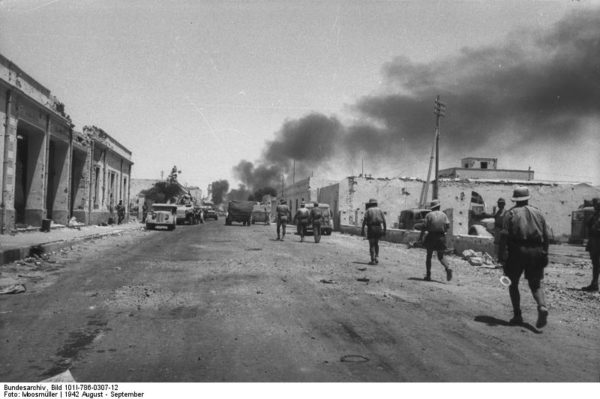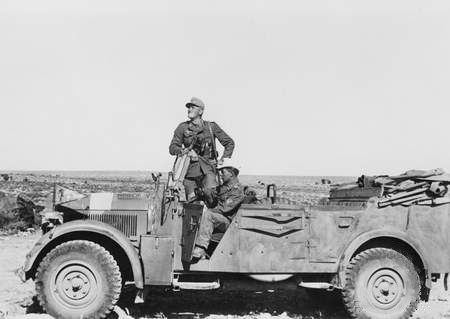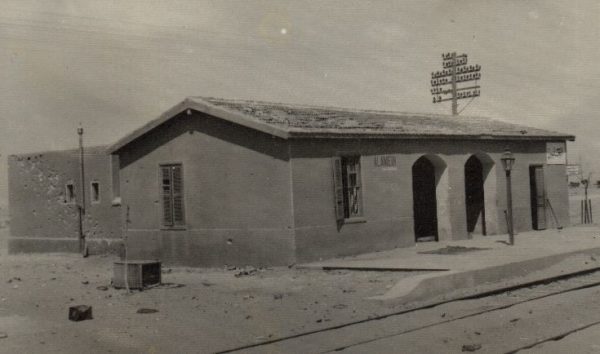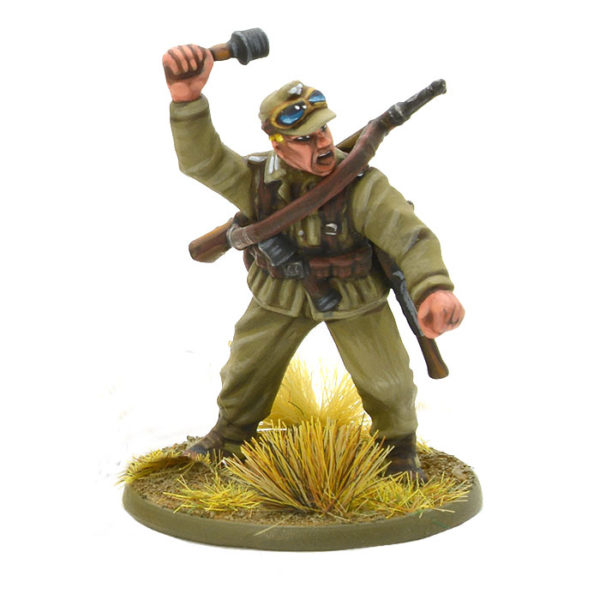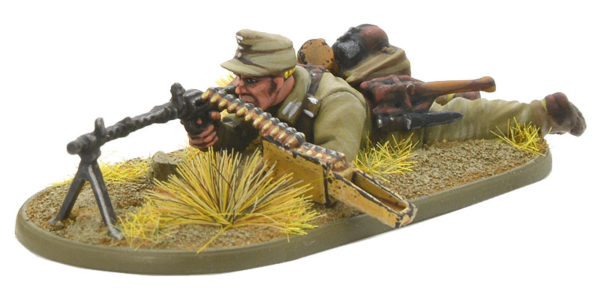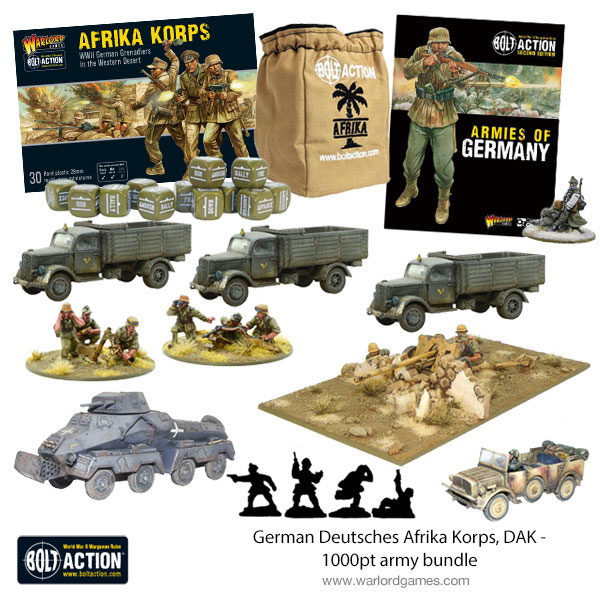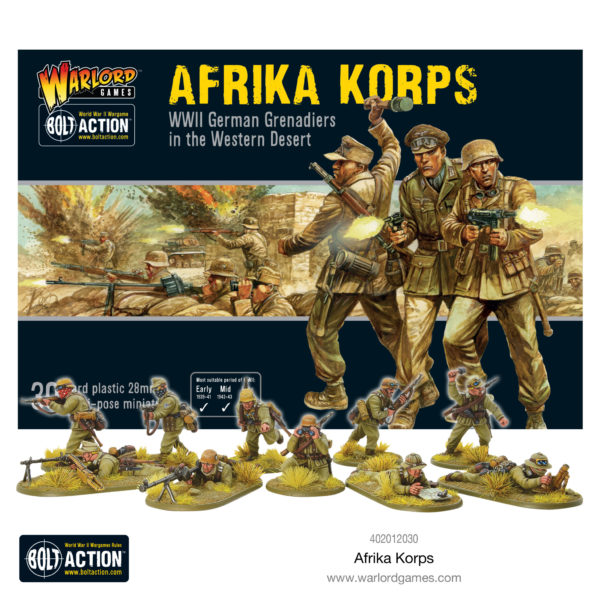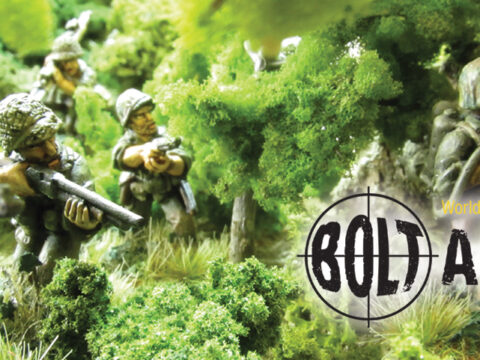To celebrate the release of our new Afrika Korps plastics, we’re taking a look at some of the elite units that served with the Desert Fox in North Africa. Today, we’re delving into the exploits of the 90. Leichte Afrika Division.
Unit History
The history of the 90th Light Infantry Division is brief lasting a mere two years, from 1941 to mid-1943 where they entered captivity after the fall of Tunisia.
Originally raised as the Division Command for Special Uses Africa, composed of two units already fighting around Tobruk in summer 1941. The division was formed as part of the assault on Tobruk and the surrounding area. Originally composed of hardened desert and mountain warfare specialists and a group of Germans who had fought in the French Foreign Legion before the war began.
The division helped to repulse the Commonwealth relief of Tobruk as part of Operation Battleaxe and then remained on station to defend the frontier and surrounding area.
Following the bloody fighting during Operation Crusader, the 90th Light found itself defeating a major counter-attack by the Australians at Sidi Rezegh, then fighting a series of costly rearguard actions back to the frontier at El Aghelia.
From El Aghelia, Rommel quickly counter-attacked. Freshly provisioned and supplied with reinforcements, the 90th Light led the charge back across the desert, driving towards Gazala before establishing new defensive positions and digging in for the inevitable assault on Tobruk.
In May 1942, Rommel launched his attack to break out from the Gazala area and roll up the Commonwealth positions around Tobruk. The 90th Light fought at El Adem, Sidi Rezegh and in the Knightsbridge position where the heaviest fighting took place.
Following the Axis capture of Tobruk, the division pursued the retreating Commonwealth forces to the new defensive line at El Alamein. During the ensuing fighting, the 90th Light was reduced to around 2000 men, having taken serious losses in the previous 5 weeks of fighting.
After catastrophic defeats at Alam El Haifa and the second battle of El Alamein, the 90th Light was retreating once again, establishing a series of blocking positions to waylay the Commonwealth advance.
The Allied landings in Algeria and Morocco as part of Operation Torch in November 1942 spelt the beginning of the end for Axis resistance in North Africa. Assailed from east and west, they were driven from Libya, with the 90th light as a rearguard.
Now emplaced on the Mareth line, the 90th Light found themselves desperately short of men and ammunition and were unable to resist the British assault in March 1943.
By May 1943, the division’s fighting spirit was spent and they surrendered at Enfidaville on the 12th.
Key Battle: Alam el Halfa
The Battle of Alam el Halfa took place between 30 August and 5 September 1942, in the area south of El Alamein.
The 90th Light Division was to accompany the 15th and 21st Panzer divisions as part of the attack on the Commonwealth defences in the area around El Alamein. They would be facing the battle-hardened core of the 8th Army, re-equipped with brand new M3 Grant tanks and 6pdr anti-tank guns, dug into prepared positions festooned with barbed wire and anti-tank mines.
While a ferocious tank battle raged back and forth across the desert, the 90th Light was engaged in assaulting positions defended by tenacious New Zealanders, pushing hard against the 8th Army’s southern flank.
Despite several days of intense fighting, Rommel’s attack fizzled out and he took the decision to withdraw. The tenacious 90th Light division found themselves part of the rearguard, screening the retreat of the two Panzer divisions. During the fighting, the 90th Light inflicted just under 700 casualties on the pursuing 132nd brigade.
By 5th September, the Afrika Korps had retired to its starting positions, as Montgomery’s 8th Army broke off the pursuit, while the British Desert Air Force (DAF) continued to harass the Axis, flying hundreds of sorties every day.
The new plastic DAK
The stunning new plastic German DAK will allow any modeller a great opportunity to create any pose they please! However, we hope some of you recongnise some of our poses we chose for our models…
Using the 90. Leichte Afrika Division in Bolt Action
We’ve put together a list to represent the 90th Light Division at the height of their infamous career in the Western Desert. This list was created using the 1942 DAK Light Africa Division force selector in the new Campaign: Western Desert supplement. This gives you a ferociously tough and highly mobile force, with a metric tonne of anti-infantry and anti-tank firepower.
| Unit Type: | Unit Name: | Upgrades: | Total Cost: |
| Headquarters | 1st Lieutenant (Veteran) | 2x extra men | 91pts |
| Infantry | Schutzen Squad (Veteran) | 2x extra men, 2x LMGs, 1x SMG | 127pts |
| Infantry | Schutzen Squad (Veteran) | 2x extra men, 2x LMGs, 1x SMG | 127pts |
| Infantry | MG-34 Team (Veteran) | N/A | 65pts |
| Infantry | MG-34 Team (Veteran) | N/A | 65pts |
| Infantry | Anti-tank Rifle Team (Veteran) | N/A | 39pts |
| Vehicle | SdKfz 231 (Veteran) | N/A | 120pts |
| Vehicle | PzKpfw IV F (Veteran) | N/A | 210pts |
| Vehicle | SdKfz 251/1 Hanomag (Regular) | N/A | 89pts |
| Vehicle | SdKfz 251/1 Hanomag (Regular) | N/A | 89pts |
| Total Points Cost: | 1012 pts |


